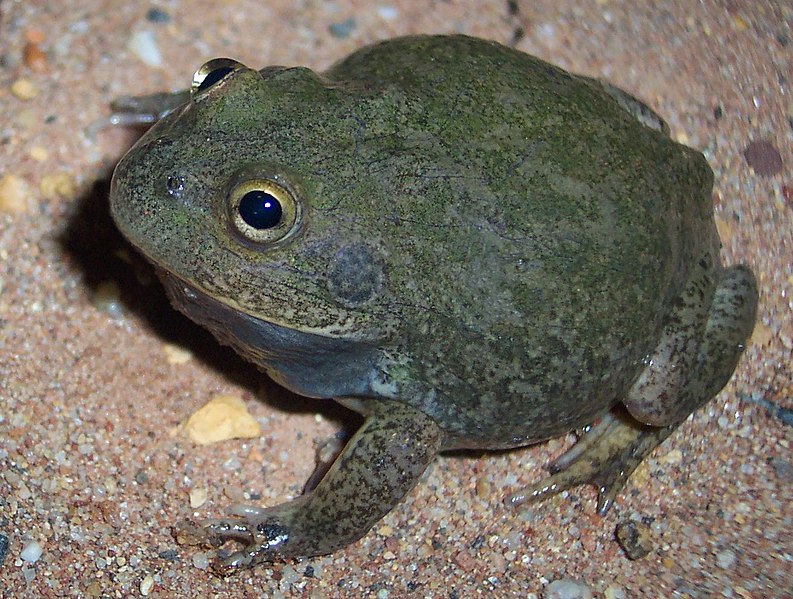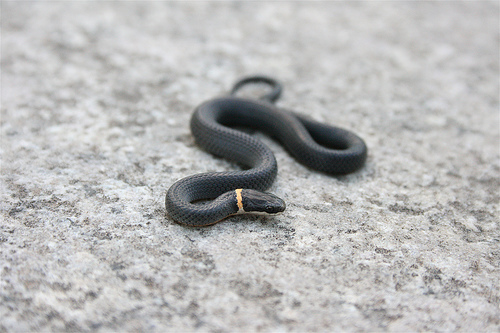 Most herp enthusiasts know that amphibians are usually quite sensitive to warm temperatures. However, reptiles, even those native to tropical and desert habitats, may be severely impacted as well. Following are some general guidelines to keep in mind at the height of summer – please write in for more detailed information about the animals in your collection.
Most herp enthusiasts know that amphibians are usually quite sensitive to warm temperatures. However, reptiles, even those native to tropical and desert habitats, may be severely impacted as well. Following are some general guidelines to keep in mind at the height of summer – please write in for more detailed information about the animals in your collection.
General Considerations
Even within the hottest of natural habitats, herps find ways to escape temperature extremes. Millions of years of evolution have brought us a great many surprises in this regard – Australia’s Water Holding Frog, for example, thrives where most unprotected creatures, even reptiles, would cook in short order. So while desert adapted animals may be better suited to withstand heat, do not assume that they will be fine without special attention.
Many herps remain active in extreme habitats by utilizing unique “micro-habitats” – regions that remain cool or damp despite general conditions. Thus, Big headed Turtles inhabit cool streams in warm regions, leaf litter and the burrows of larger animals allow Gopher Frogs, Caecilians and other “delicate” amphibians to inhabit areas that should, in theory, be too hot to support them, and so on.
Water chillers, air conditioners and trout-holding tanks can all be put good use during hot weather. Basements, when available, are a wonderful resource. In the NYC area, most basements I’ve used ranged from 66-70F in summer and 52-56F in winter.
Amphibians
 With the exception of a very few species (i.e. the African Grey Treefrog), most amphibians weaken and die is short order when forced to endure hot and/or dry conditions. Cool temperatures are usually preferable…in fact, research labs sometimes refrigerate Leopard Frogs in order to curb “red leg” infections, and I’ve had good results doing the same for Mexican Axolotls. On two occasions during my time at the Bronx Zoo “dead” salamanders placed in the hospital’s necropsy refrigerator were found to be alive and kicking the next morning!
With the exception of a very few species (i.e. the African Grey Treefrog), most amphibians weaken and die is short order when forced to endure hot and/or dry conditions. Cool temperatures are usually preferable…in fact, research labs sometimes refrigerate Leopard Frogs in order to curb “red leg” infections, and I’ve had good results doing the same for Mexican Axolotls. On two occasions during my time at the Bronx Zoo “dead” salamanders placed in the hospital’s necropsy refrigerator were found to be alive and kicking the next morning!
The temperatures favored by amphibians can be quite surprising. I once refrigerated a group of Fire Salamanders in order to induce hibernation, but found them foraging for food even at 40 F.
Although labor intensive, coolers provisioned with reusable gel ice packs make good summer homes for particularly sensitive amphibians. A quite “intense” friend of mine kept Black-Chinned Red Salamanders in this way, changing the packs twice daily, for over 20 years. I inherited one of his salamanders, which is now at least 31 years old, so the technique does work!
If you keep tadpoles, salamander larvae or wholly-aquatic species, bear in mind that warm water holds less oxygen than does cool water. Gilled larvae are therefore prone to suffocation. Neotenic salamanders such as Mudpuppies and Axolotls have lungs but prefer to rely upon their gills and skin for oxygen transfer. As temperatures rise, they will begin to wave the gills in order to create water currents, or will swim to the surface for air. This will stress them and weaken the immune system.
Some amphibian keepers take advantage of the summer’s heat by allowing their animals to aestivate, or become dormant. This is a tricky prospect (please write in for details) but can be the best course, and even a breeding stimulus, for some species. Sirens, African Bullfrogs, Water-Holding Frogs and Spadefoot Toads are among the champion “summer sleepers”.
Turtles and Tortoises
Despite a propensity for basking, tropical climes and deserts, Chelonians are not immune to temperature stress. Some species, such as Big Headed and Bog Turtles, are known to favor rather cool temperatures. While they may not expire in the manner of amphibians, such turtles may suffer health problems brought on by an over-worked immune system and the stress of trying to find an appropriate retreat. Bog Turtles under my care at  the Bronx Zoo, housed in a very warm holding area, fared much better once chillers were installed in their enclosures.
the Bronx Zoo, housed in a very warm holding area, fared much better once chillers were installed in their enclosures.
Common Snapping Turtles are active at very low temperatures, and have even been seen moving about in ice-covered ponds. Captive become restless when water temperatures exceed 85F or so, something I’ve noticed in Common Musk Turtles as well.
Perhaps because of their “tortoise-like” appearance, American Box Turtles are often kept at inappropriately-high temperatures. They fare best at 72-75F, with access to a warmer basking spot. Dry conditions have been linked to eye and ear ailments, so be sure to use moisture-retaining substrates and mist regularly. A water bowl or pond large enough for soaking must always be available.
Even desert-adapted tortoises (especially hatchlings) may need special attention in summer. For example, Egyptian Tortoises avoid temperature extremes by remaining dormant, and in the wild may be active for only a few months each year. Those I kept became very lethargic when subjected to warm temperatures year round.
Snakes and Lizards
Tentacled Snakes inhabit shallow, still waters in Vietnam, Cambodia and Thailand, and so might be expected to be well-adapted to warm temperatures. Yet all that I have kept would leave the water (an unnatural and, given their clumsiness on land, dangerous behavior) when temperatures exceeded 84F.
Smooth and Keeled Green, Brown (DeKay’s), Red-Bellied and Ring-Necked Snakes, and other small, insectivorous species, are quite prone to dehydration and heat stress. Although they need a chance to dry out, a cool, moist retreat is essential to their well-being.
Many lizards favor hot, dry conditions, but even desert-adapted species have their limits. For example, field research has shown that Gila Monsters (Not an animal I would recommend as a pet!) spend almost all their time in cool, damp burrows. Certain lizards, such as the Crocodile Skink, favor surprisingly low temperatures while others, such as the Green Anole, are prone to dehydration in arid surroundings. As always, research your species’ natural history before making any assumptions, and please feel free to write in if you would like assistance.
Further Reading
Big Headed Turtle (Temperatures in Natural Habitat)
Cyclorana platycephala image referenced from wikipedia and originally posted by Tnarg 12345
Testudo kleinmanni werneri image referenced from wikipedia and originally posted by Abrahami
Ring-necked Snake image referenced from wikipedia and originally posted by Cody Hough, college student and photographer in the Michigan Area
 That Reptile Blog – Reptile, Amphibian and Exotic Pet Care and Information
That Reptile Blog – Reptile, Amphibian and Exotic Pet Care and Information





I live in Texas where the temps have been way over a 100 each day. There is a little female anole that is living in my plants. She does not look well so I have been trying to hydrate her by spraying a fine mist on her. She seems to enjoy it and does not run away. Am I doing her a disservice by doing this. I also put some jar lids with water on the window seals and she has taken a drink from them.
Hello Karen, Frank Indiviglio here.
Thanks for your interest in our blog. Very perceptive question, glad you raised it. Traditionally, biologists caution against interfering and so on. However, most habitats are heavily influenced by humans, and the resident animals are much “interefed with” no matter what we do or do not do. This is especially true concerning animals that live right alongside us, such as green anoles. One reason they are so common in gardens and near homes is because conditions (regular watering, flowers that draw insects, lack of predators, etc.) render survival easier than in natural habitats. I can’t see any harm in providing water…her natural instincts will not be affected; the fact that it is drinking from a bowl shows that it is heat-stressed; captives usually lap drops only and refuse to drink from bowls.
Please let me know if you need any further information. Good luck, enjoy and please keep me posted.
Best regards, Frank Indiviglio.